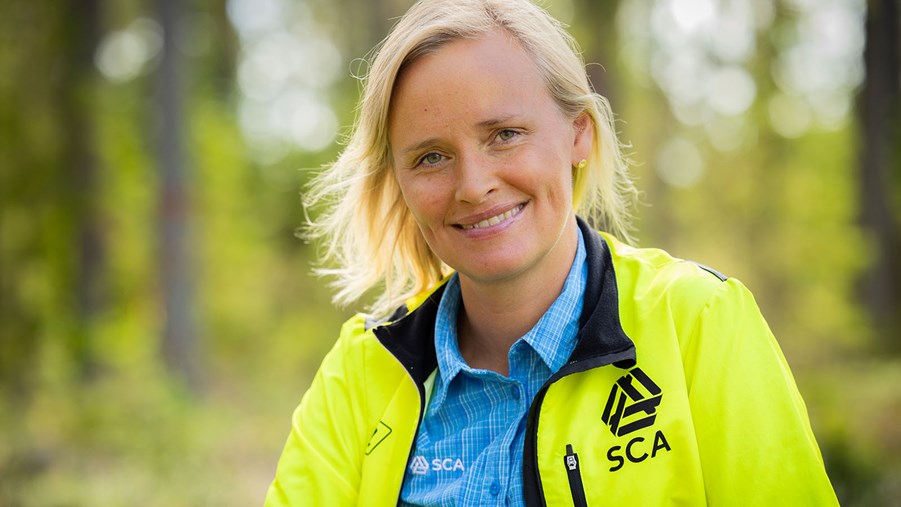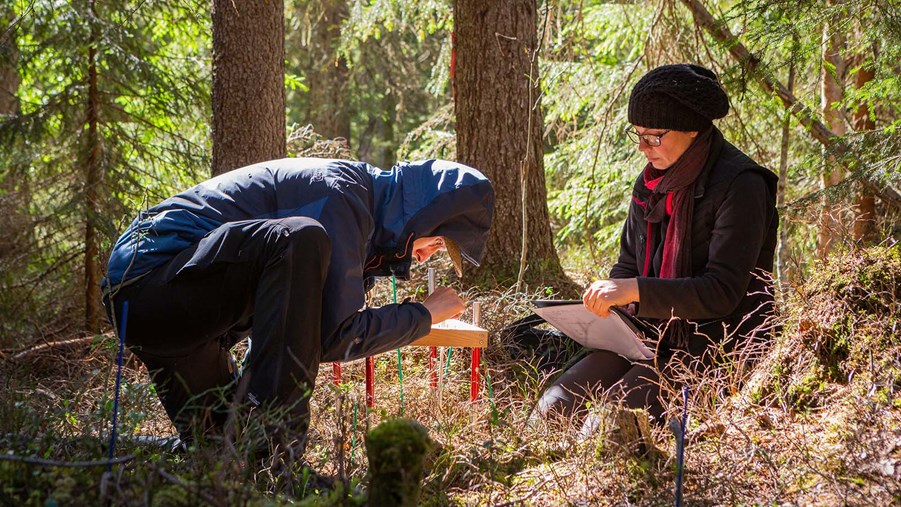
SCA is north Europe’s largest private forest owner, with 2.6 million hectares of forest land, and with such major resources come major responsibilities. Meet Anna Cabrajic, forest ecologist at SCA, who workes in Sundsvall, Sweden.
What is your background and what do you do?
I’m essentially a biologist and I did my thesis on lichen growth. For my exam project, I developed mathematical models for calculating the impact of fishing on the ecosystem of the Baltic Sea. Research and theoretical work are fun, but it’s on the practical front that I feel I can make a difference. As an ecologist, part of my job involves supporting forest planning, which involves drawing up instructions, procedures and guidelines on how to work on nature conservation and show consideration, for example by leaving buffer zones around watercourses, and preserving key biotopes and ancient monuments. It’s very much long-term work. The results of action we take today will only be seen in 100 years’ time.
What is SCA doing?
As a forest owning company, we follow the forests through its entire lifecycle, planting trees and tending the forests. Once they’ve grown, the trees are harvested and the logs are transported to the sawmills and paper and pulp mills, where we manufacture wood products, hygiene products, corrugated board and packaging paper. Anything left over is used to produce biofuel, tall oil and other products that can be used, for example, in industry.
What is top of your inbox right now?
I’m currently looking into the areas that we’re setting aside. As an certified company, we have to set aside at least 5% of productive forest land, which then can’t be used for forest production. Here at SCA, our figure is actually 8%. I’m also putting together targets and strategic plans for various development areas, for example on how to work with continuous cover forestry methods in places of high natural and social conservation value. And where we need to give nature a helping hand, like when we remove spruces to promote broadleaf forests.
What action are you taking to stop climate change?
We’re part of the climate solution because our raw materials replace fossil-based products, while carbon sequestration in the forests is higher than the amount we harvest. We’re also now working on wetland restoration, among other things. Many marshes were drained in the 1930s and 40s to reclaim land for forestry. Now we’re filling in the old drainage ditches and recreating these wetlands. These are measures that reduce carbon emissions from the soil and promote biodiversity.
What are the drivers of your development?
SCA has ISO 14001 certification, which means that we work on continuous improvement. For us, the key is to find the balance between wood production, biodiversity and social considerations. The public, along with companies such as IKEA, Nestlé, Tetrapak and so on, are driving the issues and making demands of everyone producing wood and pulp-based products. I think that’s a good thing.
What challenges lie ahead for the Swedish forests?
The challenge is to find a sensible balance between the different assets in the forests. How can we focus on climate benefits while also protecting biodiversity? How can we make the forests are attractive places for recreation? It’s important here to have a constructive dialogue with our stakeholders.
What do you feel we should be thinking about for the future?
We find ourselves in two global crises – climate change and biodiversity – and the forests are a big part of the solution to both. We need to decide what goals we have in different areas and then take the right action in each location. It’s not just about setting aside areas for free development; we also need to maintain natural processes such as fires. These days, we’re so good at extinguishing forest fires that species that depend on fire for their survival are under threat. And sometimes we have to help the species along the way via prescribed burning.
In addition, we need to protect watercourses and the most vulnerable organisms. The freshwater pearl mussel, for example, is not just reliant on clean water. The mussel’s larvae also hitch a ride in the gills of the salmon trout, before jumping ship when they reach their destination. So we’re making sure we have extra-wide buffer zones around watercourses and we’re replacing culverts to remove migration obstacles, so that salmon trout can move freely.
